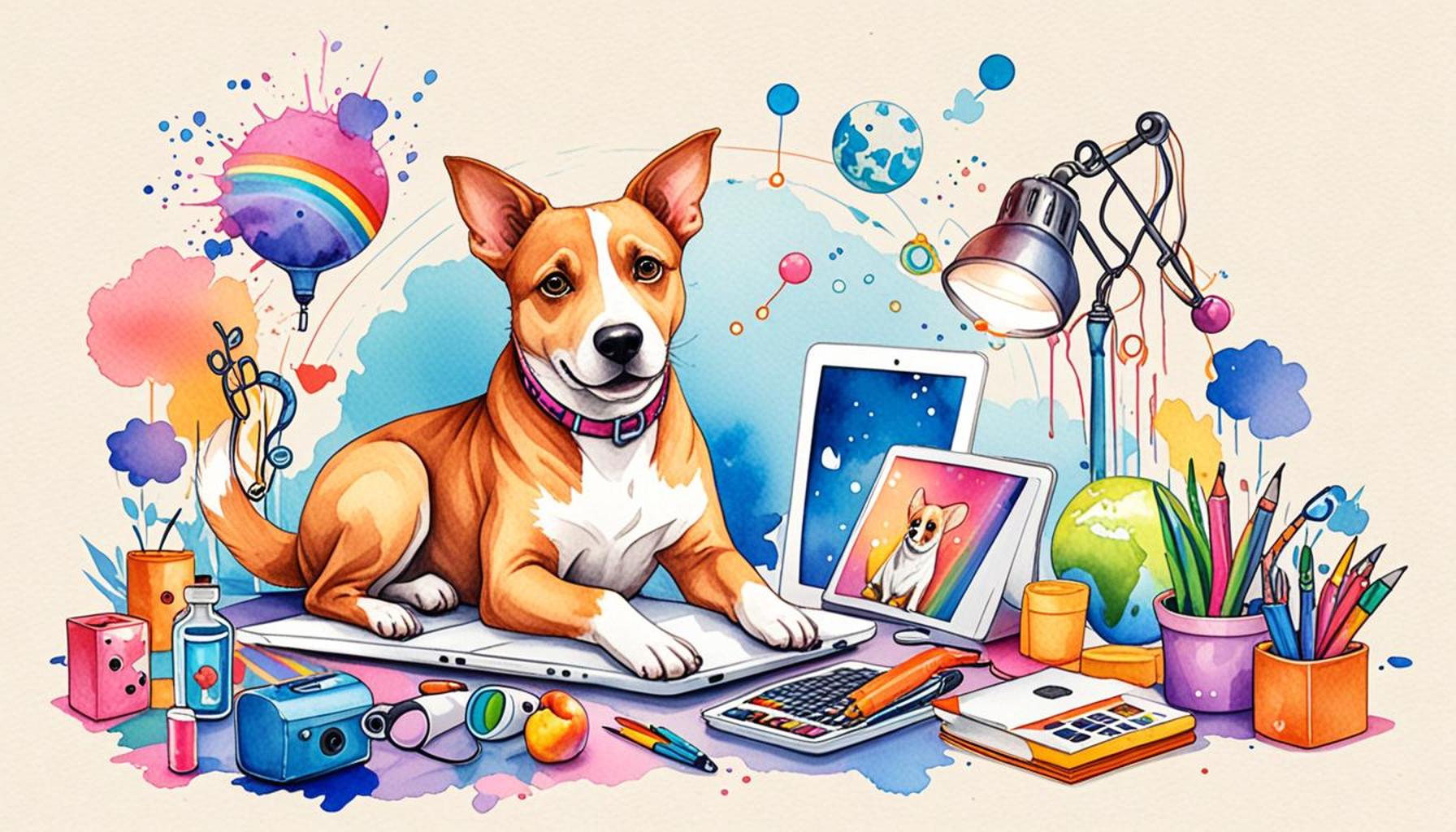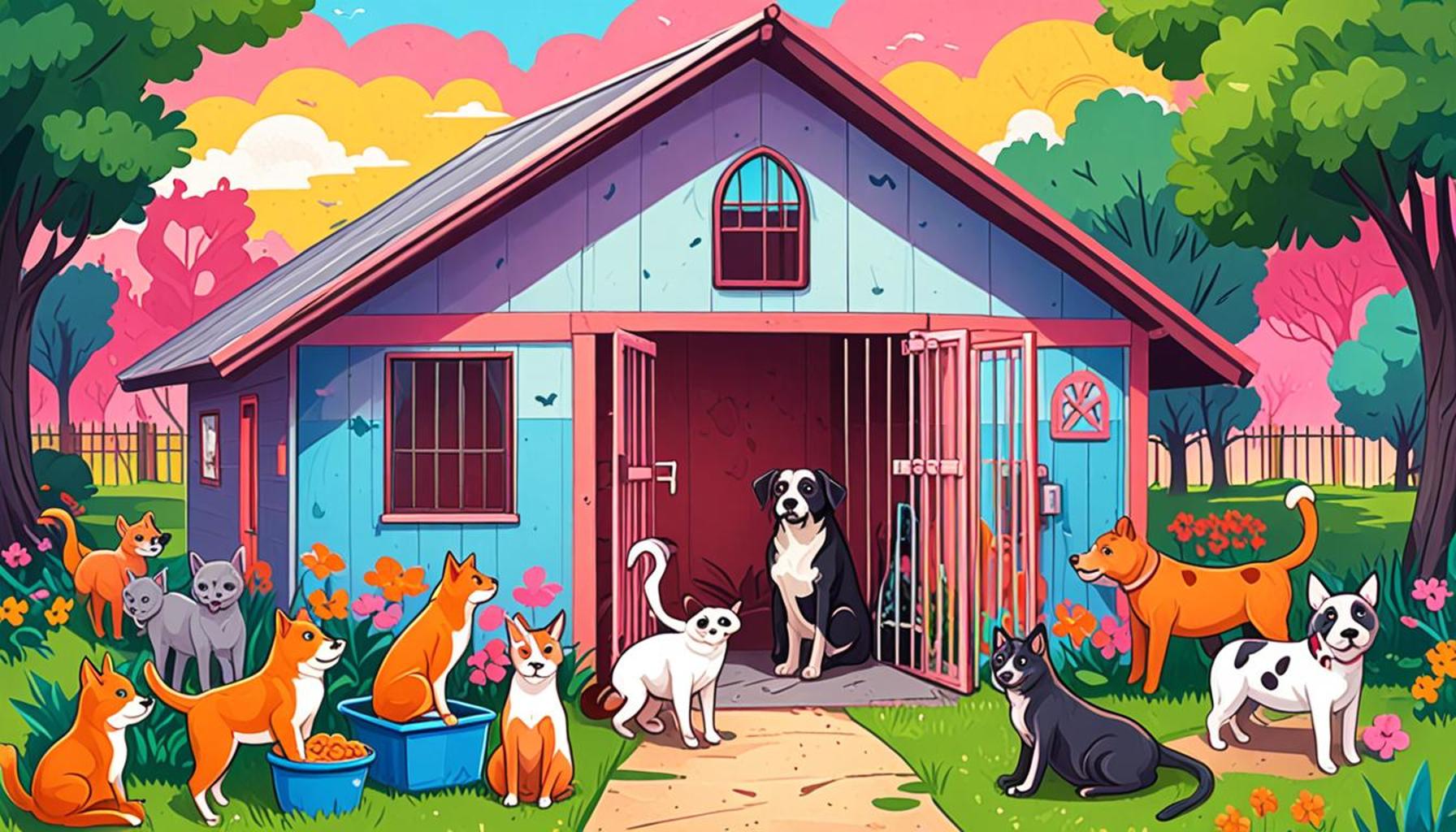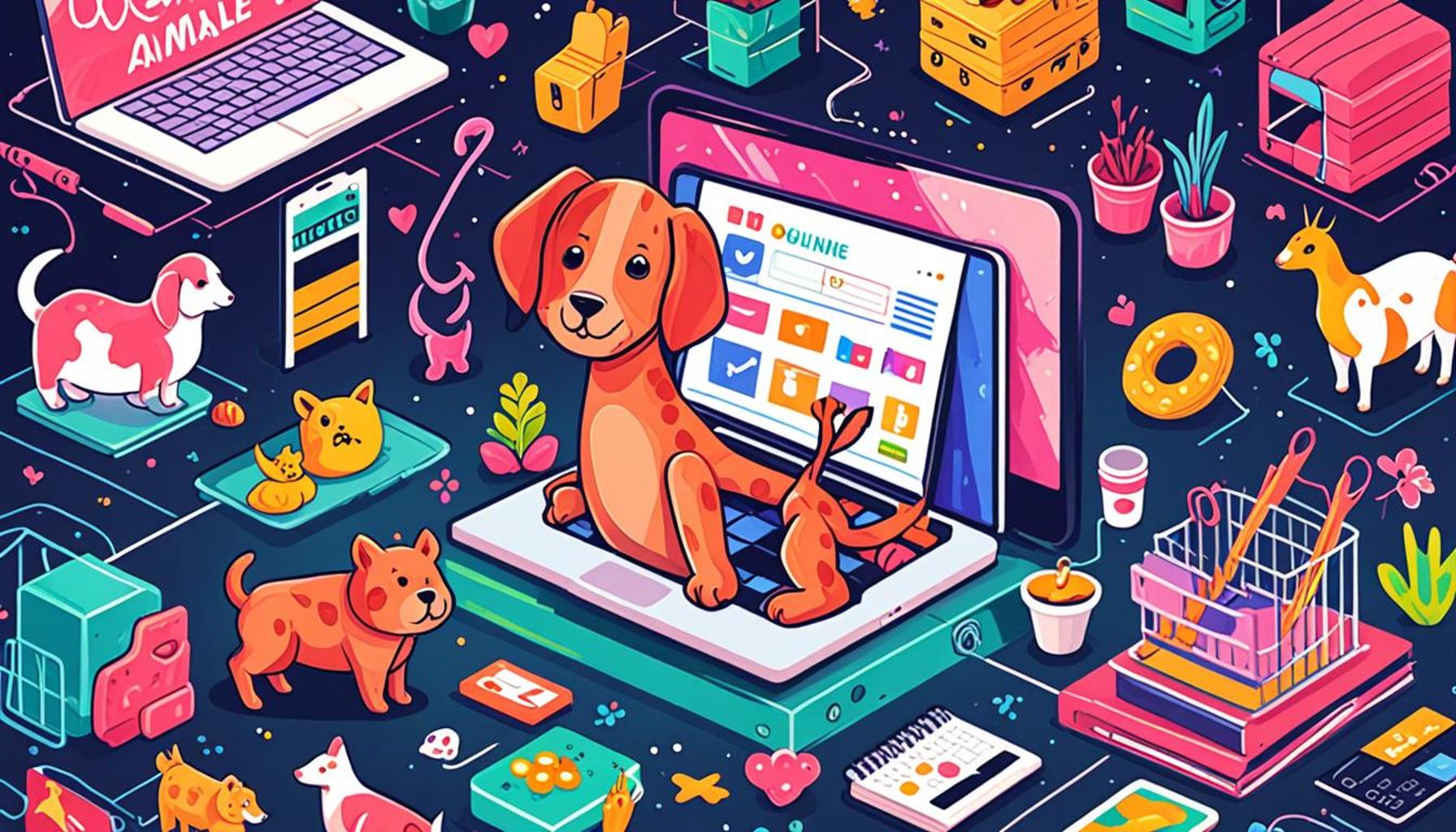How Technology is Transforming the Pet Adoption Process: Innovative Apps and Tools

The Evolution of Pet Adoption
The pet adoption process has undergone a remarkable transformation in recent years, primarily due to the rapid advancements in technology. Innovative applications and tools have revolutionized how shelters, organizations, and potential pet owners connect. This evolution not only simplifies the adoption journey but also enhances the overall experience for all parties involved, ultimately leading to better outcomes for animals in need of loving homes.
Mobile Applications
One of the most significant changes has come from the rise of mobile applications. Dedicated apps like Petfinder and Adopt a Pet allow potential adopters to browse a wide array of adoption listings directly from their smartphones or tablets. With features such as filtering by breed, size, and location, users can explore options that best fit their lifestyle. For instance, families with children might prioritize adopting friendly breeds, while people living in smaller apartments might focus on smaller or less active animals. These apps make the adoption process accessible anytime and anywhere, empowering individuals to take the first step from the comfort of their homes.
AI-Powered Matchmaking
Moreover, with the integration of AI-powered matchmaking, the adoption process has become even more personalized. Sophisticated algorithms analyze data from both potential adopters and available pets to create ideal matches based on lifestyle, preferences, and even personality traits. For example, a busy professional seeking a low-maintenance pet might be paired with a gentle senior dog, while an active family may be matched with a playful puppy ready for adventures. By streamlining compatibility, these tools drastically improve the likelihood of successful, lasting adoptions.
Virtual Meet-and-Greets
Another significant advancement is the facilitation of virtual meet-and-greets. Platforms that allow potential pet owners to meet their prospective companions via video calls have emerged as a valuable resource, particularly during the pandemic when in-person visits were limited. This innovation enables families to engage with animals, ask questions about their behavior, and get a sense of the pet’s personality before committing to a visit to a shelter. By bridging the gap between virtual and physical interactions, these technologies foster informed decision-making, which in turn decreases the likelihood of returns.
As a result of these advancements, potential adopters can explore a diverse array of options that are tailored specifically to their needs and preferences. Data shows that technology has made pet adoption more efficient, ultimately saving time for shelters and helping to find better homes for animals. This technological revolution is not merely reshaping the pet adoption landscape; it is also forging deeper connections between communities and the animals that enrich our lives. As more individuals turn to these digital solutions, the future of pet adoption looks brighter than ever, with possibilities for innovation still on the horizon.

DISCOVER MORE: Click here for tips on keeping your pets safe and comfortable
Revolutionizing the Search for Pets
The advancements in technology have reshaped not just the efficiency of the pet adoption process but also the way shelters and potential pet parents interact. With an increasing number of households across the United States considering pet adoption—over 3 million dogs and cats are adopted each year—these innovations have become crucial in addressing both the needs of animals and those seeking companionship. Technology is not simply speeding up the process; it is enhancing transparency, communication, and engagement, leading to a more informed populace ready to take on the responsibilities of pet ownership.
Social Media Outreach
Another area where technology shines is in the use of social media platforms. Organizations and shelters are leveraging platforms like Facebook, Instagram, and Twitter to showcase animals in need of homes. Engaging content, including heartwarming videos and captivating images, allows potential adopters to form emotional connections with pets even before a visit. For example, the hashtag campaign #AdoptDontShop has gained traction, raising awareness about the importance of adopting from shelters and promoting responsible pet ownership.
Virtual Reality Experiences
Intriguingly, some shelters are implementing virtual reality (VR) technologies to create immersive experiences for potential adopters. By utilizing VR headsets, users can take virtual tours of shelters, interact with animals in a simulated environment, and envision how a new pet fits into their lives. This innovative approach not only captivates the audience but also encourages adoption decisions by making the experience more engaging. Imagine being able to “walk” a virtual adoption center from your living room, meeting future companions without even stepping outside.
Data-Driven Insights
Furthermore, large sums of data collected through adoption platforms is being utilized to drive better decision-making. Shelters can now use analytics tools to track adoption trends, monitor which breeds are most popular, and identify which marketing strategies yield the best results. This data becomes invaluable for organizations trying to understand community preferences and challenges in the adoption process. For example, an uptick in interest for smaller, hypoallergenic dogs can prompt shelters to adjust their focus or host special adoption events tailored to these demands.
- Increased Match Efficiency: With advanced algorithms, potential adopters can quickly find pets that fit their lifestyle.
- Enhanced Transparency: Shelters can share a pet’s history, behavior, and medical background like never before.
- Real-Time Communication: App features allow potential adopters to chat with shelter staff instantly and ask questions about pets.
Today, the journey from searching for a pet to bringing one home is more than just completing paperwork; it’s an engaging, informed experience powered by technology. By connecting communities through innovative tools and applications, the pet adoption process is not only becoming swifter but also more inclusive, opening doors for the millions of loving homes that await their perfect furry counterpart. The future of pet adoption is driven by technology, indicating a promising path ahead for both animals and their future families.
The rapid evolution of technology is significantly altering the landscape of pet adoption, offering innovative solutions that enhance both the experience for potential pet owners and the welfare of animals in shelters. Central to this transformation are specialized mobile applications and online platforms designed to streamline the adoption process, making it easier for users to find and connect with pets in need of homes.One notable advancement is the use of artificial intelligence (AI) in matching prospective owners with suitable pets. Platforms like Petfinder and Adopt a Pet leverage algorithms that analyze user preferences, lifestyle, and even past pet care experiences to recommend animals that fit best. By utilizing AI, these apps not only improve adoption rates but also facilitate a more thoughtful matching process, which can lead to healthier and more sustainable companions.Moreover, virtual reality (VR) technology is making waves in pet adoption, offering virtual tours of shelters and interactions with pets before making any commitments. This immersive experience allows potential adopters to connect with animals in a more meaningful way, significantly reducing the barriers often associated with in-person visits. For those unable to visit shelters due to distance or mobility issues, such technological offerings bring a sense of inclusion, allowing everyone to find their perfect pet from the comfort of their home.Innovative features such as trackable adoption progress and post-adoption support are also becoming integral to various platforms. Users can receive updates about their adopted pets’ health and behavior along with tips for care and training, ensuring that the animals make a smoother transition into their new homes. This follow-up assistance is crucial for reducing the number of pets returned to shelters, reinforcing the long-term success of the adoption.Furthermore, social media integration has proven beneficial in raising awareness about adoptable pets. Platforms like Instagram and Facebook allow shelters to showcase animals visually, garnering interest through appealing photos and engaging stories. This approach not only widens the audience reach but also fosters a sense of community among animal lovers, encouraging increased advocacy for pet adoption.In conclusion, the intersection of technology and the pet adoption process is not merely an augmentation of traditional methods but a profound shift that promotes efficiency, empathy, and informed decision-making. As these innovative apps and tools continue to develop, they carry the promise of transforming countless lives—both for pets seeking forever homes and for families looking to welcome a new furry friend into their lives.
LEARN MORE: Click here for essential pet adoption resources
Enhancing the Adoption Experience
The impact of technology on the pet adoption process extends beyond initial searches and marketing strategies. It is also prominently influencing the entire adoption experience, from applications and introductions to post-adoption support. The integration of mobile applications and various digital solutions is making the entire process smoother and more accessible for both shelters and potential adopters.
Mobile Applications for Seamless Processes
Today, many shelters and rescue organizations have their own mobile apps designed to streamline the adoption process. These apps allow users to browse available pets, submit adoption applications, and even set up “meet and greet” appointments directly from their smartphones. This convenience helps to eliminate barriers for potential adopters, enabling them to find their perfect pet more efficiently. For example, the Petfinder mobile app empowers users to filter potential pets by breed, age, size, and location, ensuring that they can discover suitable companions that fit their lifestyle needs.
Digital Care Management Tools
Furthermore, technology has introduced digital care management tools that aid first-time pet owners in successfully transitioning their new companions into their homes. Applications like Pawprint offer resources such as training tips, behavior tracking, and health monitoring, ensuring that adopters feel supported after bringing a pet home. This ongoing assistance fosters long-term relationships between pets and their new owners, reducing the likelihood of returns to shelters. In fact, studies suggest that pets adopted with follow-up support have a higher retention rate, which is crucial in addressing the alarming statistic that as many as 20% of adopted pets are returned within the first year.
Community Engagement Platforms
Moreover, technology is enhancing community engagement around pet adoption through interactive platforms. Organizations like Nextdoor and Meetup help connect pet owners and adopters in local communities, facilitating events such as “bark parks” and adoption fairs. These gatherings not only promote community spirit but also enhance adoption efforts by allowing potential adopters to interact with pets and other pet owners in a casual setting. The rise of social media-centric events, like dog walks or fundraising gatherings, showcases adoptable pets and encourages collective support, increasing visibility and interaction with potential adopters.
Virtual Adoption Events
Especially noteworthy are the advances in virtual adoption events that have emerged due to recent global challenges. Many shelters now host virtual meet-and-greets featuring available pets via live streaming on platforms such as Zoom or Facebook Live. This adaption allows those with mobility issues or those living in remote areas the opportunity to connect with animals that may become their future companions. Potential adopters can ask questions in real time, gaining insights into a pet’s personality and needs. This innovative format not only provides convenience but also opens adoption opportunities to a wider audience.
- Greater Accessibility: Technology enhances accessibility for all potential adopters regardless of their location or circumstances.
- Real-time Updates: Users can receive instant notifications about new pets available for adoption, ensuring they do not miss their ideal match.
- Post-Adoption Resources: Continued support in the form of webinars or online forums creates a robust support network for new pet owners.
As technology continues to evolve, the pet adoption landscape is being continuously refined, introducing tools that not only promote adoptions but also enrich the overall experience for both pets and owners. The integration of innovative apps and platforms is setting a higher standard for the state of pet adoption in America, propelling the movement towards responsible and informed pet ownership into a new era.
DISCOVER MORE: Click here for essential training tips!
Conclusion: A New Dawn for Pet Adoption
The intersection of technology and pet adoption is undeniably reshaping the landscape, enabling a more accessible, efficient, and supportive environment for both adopters and animals. As we have explored, the introduction of mobile applications has revolutionized the way potential pet owners can connect with shelters, streamlining the initial phases of searching and applying for adoptions. Increased accessibility through these apps means that furry companions aren’t just found faster — the process is tailored to each individual’s preferences and needs.
Moreover, innovative digital care management tools play a crucial role in enhancing the post-adoption experience, ensuring that new pet owners feel equipped to provide the best care for their pets. This comprehensive support dramatically lowers the return rates of adopted animals, addressing a prevailing challenge within the shelter community.
Community engagement has also been reimagined, with platforms fostering connections among pet owners that facilitate interactions, educational opportunities, and social events. This collaborative spirit energizes the adoption movement while fostering a strong sense of community, which is vital in promoting responsible pet ownership.
In light of these advancements, it is clear that technology is not merely an accessory; it is a pivotal force driving positive change in the pet adoption process. As we look forward, ongoing innovations promise to further streamline these processes, ultimately leading to a future where more animals find loving homes and lifelong human companions. This evolution invites both seasoned pet owners and newcomers to embrace the advancements and discover the joy of pet companionship, equipped with the knowledge and tools made available by technology’s transformative capabilities.



